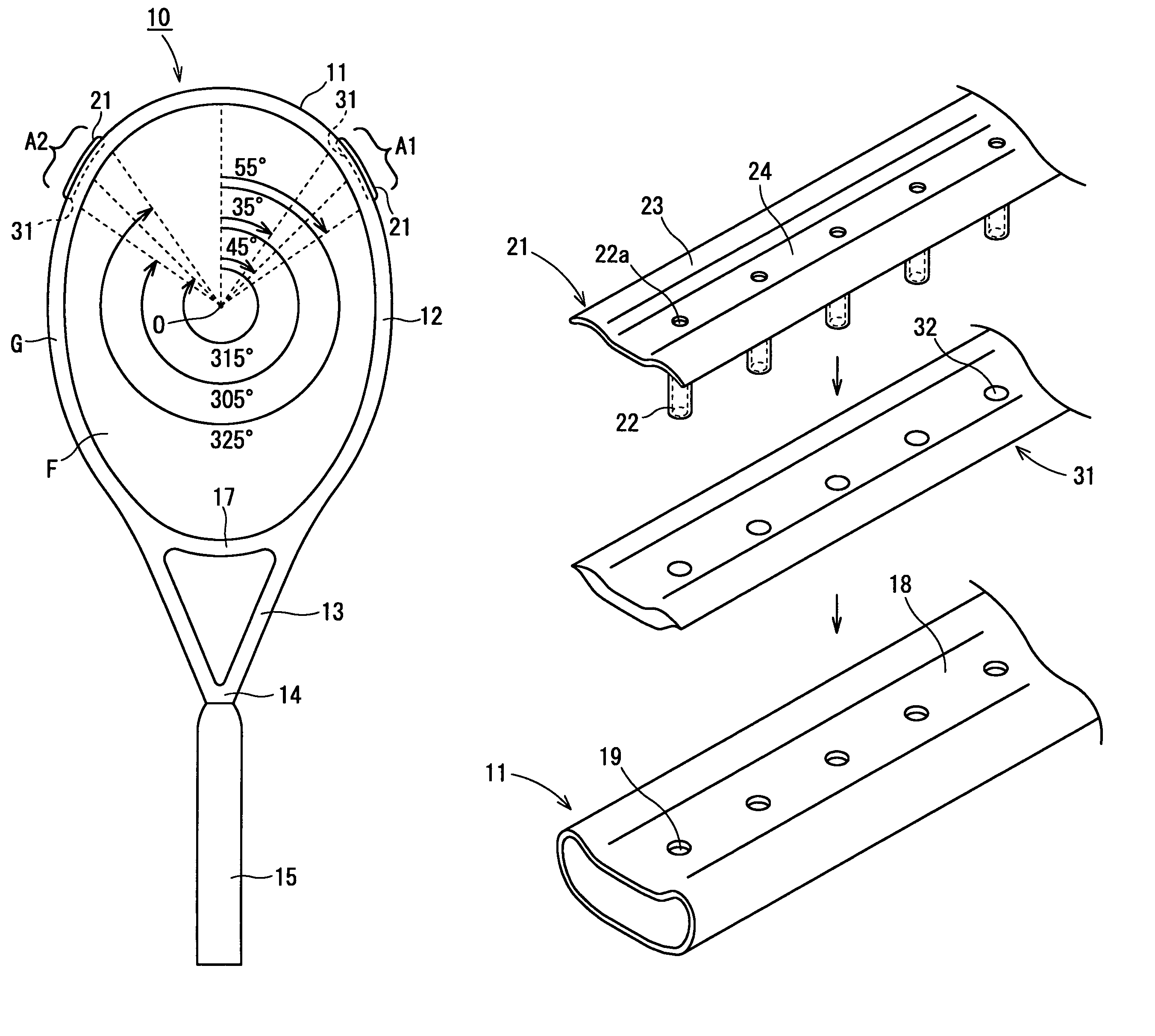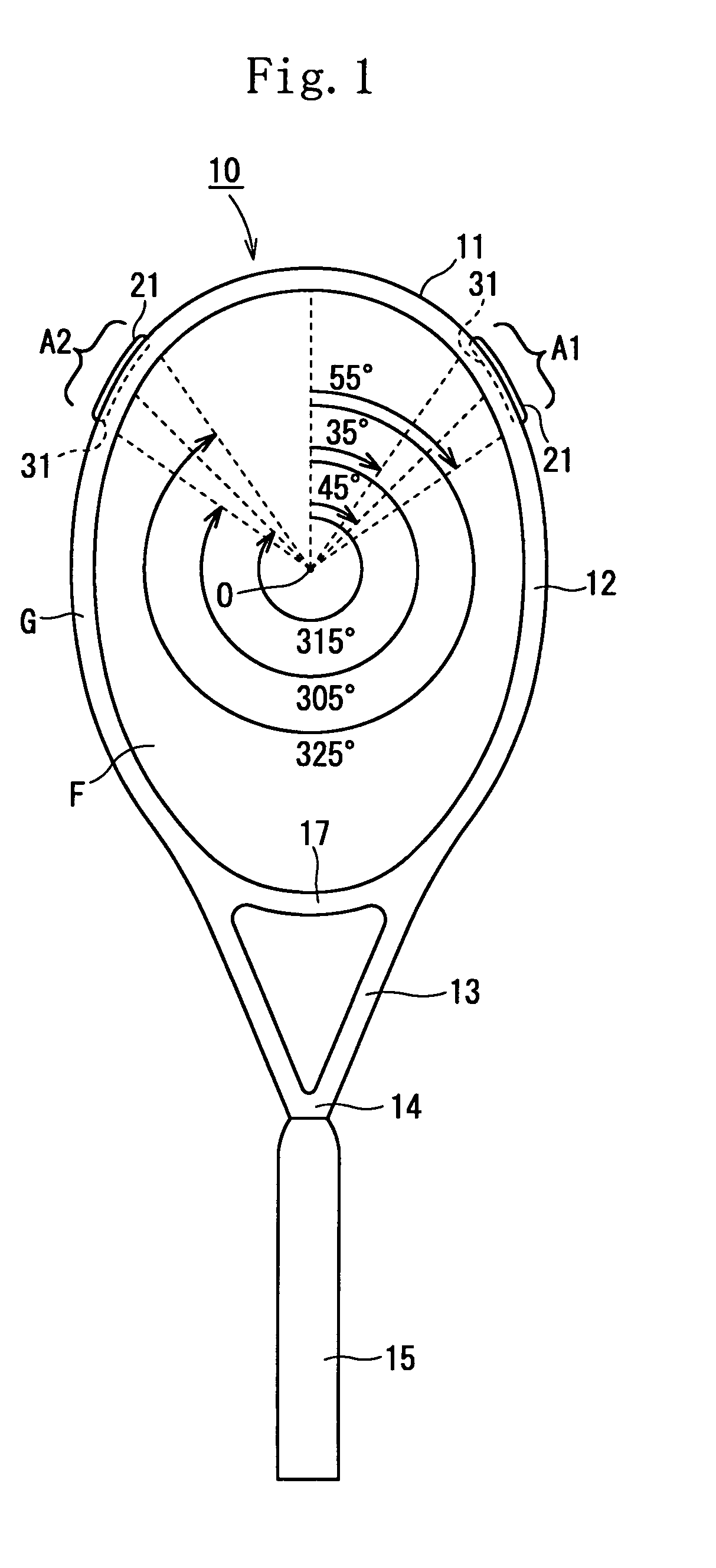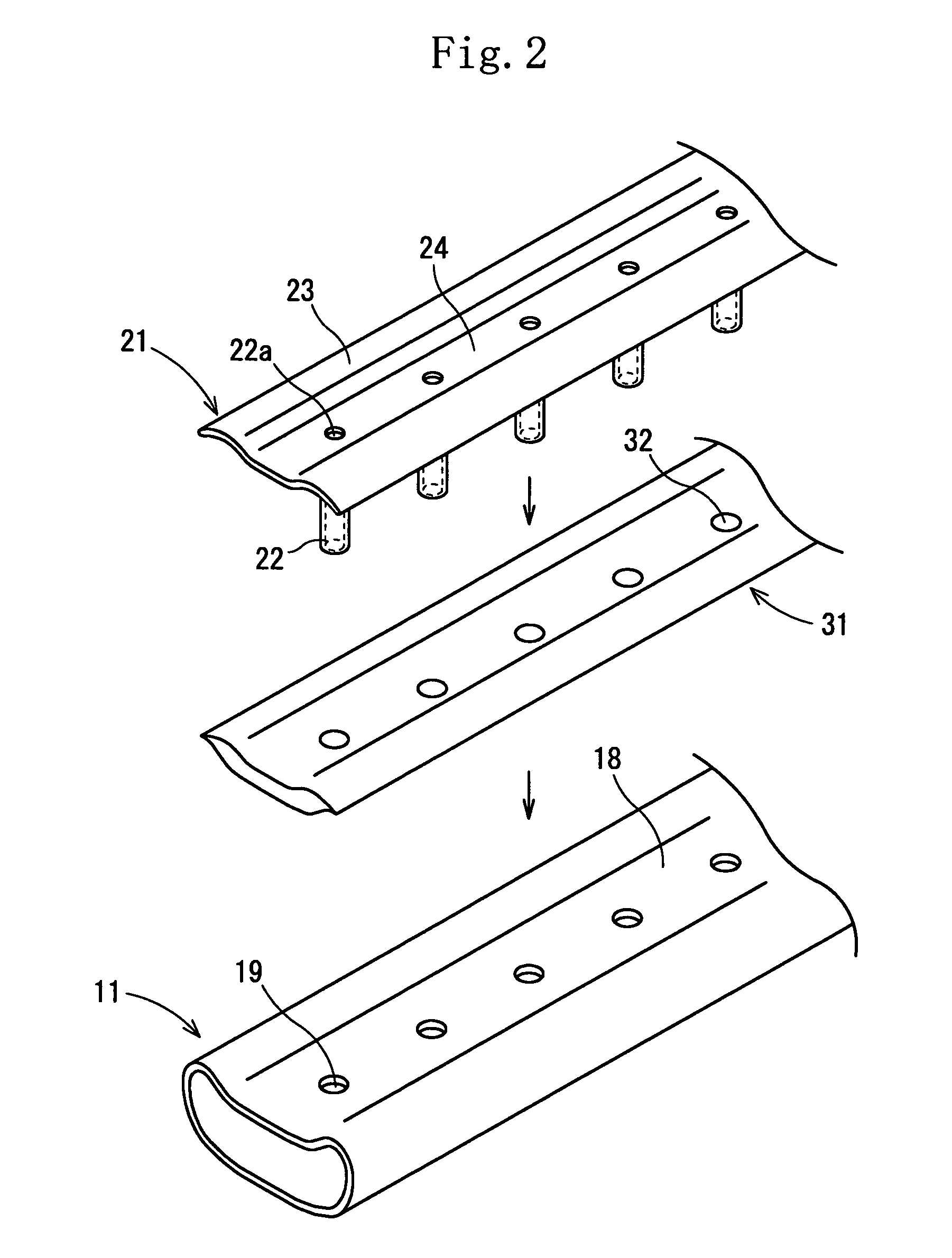Tennis racket
a tennis racket and tennis technology, applied in the field of tennis rackets, can solve the problems of increasing the moment of inertia in the center direction, deteriorating operability and face stability, and increasing the difficulty of the tennis racket rotating on the axis, so as to improve the moment of inertia, facilitate the rotation, and facilitate the operation
- Summary
- Abstract
- Description
- Claims
- Application Information
AI Technical Summary
Benefits of technology
Problems solved by technology
Method used
Image
Examples
example 1
[0106]The thickness, weight, and position of the string protection member 21 and the material, complex elastic modulus, thickness, weight, and position of the viscoelastic member 31 were all identical to those of the first embodiment. That is, the viscoelastic member 31 was formed by molding a vulcanized rubber composition consisting of 100 parts by weight of styrene-butadiene rubber (SBR), 1.5 parts by weight of sulfur, and 40 parts by weight of carbon black. The viscoelastic member 31 had a thickness of 3 mm and a weight of 3 g. The complex elastic modulus of the viscoelastic member 31 measured in the above-described condition was 3.86E+08 dyn / cm2. The string protection member 21 had a thickness of 1 mm and a weight of 2 g. One string protection member 21 and one viscoelastic member 31 were disposed in each of the above-described ranges A1 and A2. The tennis racket 10 had a weight of 240 g.
[0107]The moment Is of inertia of the tennis racket in the swing direction was set to 460,00...
example 2
[0108]The thickness, weight, and position of the string protection member 21 and the material, complex elastic modulus, thickness, weight, and position of the viscoelastic member 31 were all identical to those of the second embodiment (FIG. 5). That is, the example 2 is different from the example 1 in that one string protection member 21 and one viscoelastic member 31 were disposed in each of the above-described ranges B1 and B2. The tennis racket 10 had a weight of 239 g. The moment Is of inertia of the tennis racket in the swing direction when strings were not mounted on the racket frame was set to 456,000 g / cm2. The moment Ic of inertia thereof in the center direction when strings were not mounted on the racket frame was set to 17,200 g / cm2 (the ratio of the moment Is of inertia to the moment Ic of inertia: about 27).
example 3
[0109]The thickness, weight, and position of the string protection member 21 and the material, complex elastic modulus, thickness, weight, and position of the viscoelastic member 31 were all identical to those of the third embodiment (FIG. 6). That is, the example 3 is different from the example 1 in that one string protection member 21 and one viscoelastic member 31 were disposed in each of the above-described ranges C1 and C2. The tennis racket 10 had a weight of 240 g. The moment Is of inertia of the tennis racket in the swing direction when strings were not mounted on the racket frame was set to 450,000 g / cm2. The moment Ic of inertia thereof in the center direction when strings were not mounted on the racket frame was set to 16,400 g / cm2 (the ratio of the moment Is of inertia to the moment Ic of inertia: about 27).
PUM
 Login to View More
Login to View More Abstract
Description
Claims
Application Information
 Login to View More
Login to View More - R&D
- Intellectual Property
- Life Sciences
- Materials
- Tech Scout
- Unparalleled Data Quality
- Higher Quality Content
- 60% Fewer Hallucinations
Browse by: Latest US Patents, China's latest patents, Technical Efficacy Thesaurus, Application Domain, Technology Topic, Popular Technical Reports.
© 2025 PatSnap. All rights reserved.Legal|Privacy policy|Modern Slavery Act Transparency Statement|Sitemap|About US| Contact US: help@patsnap.com



